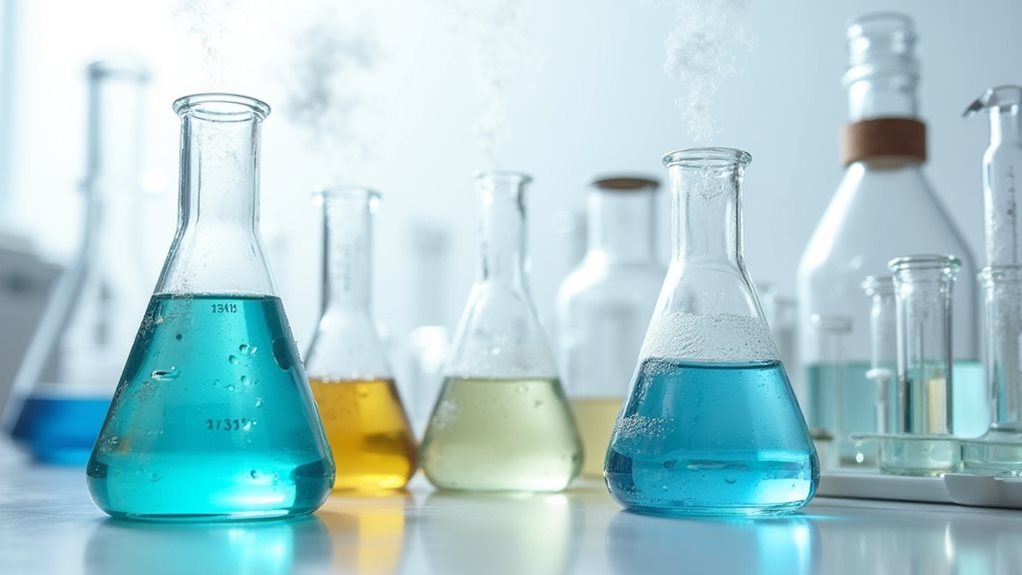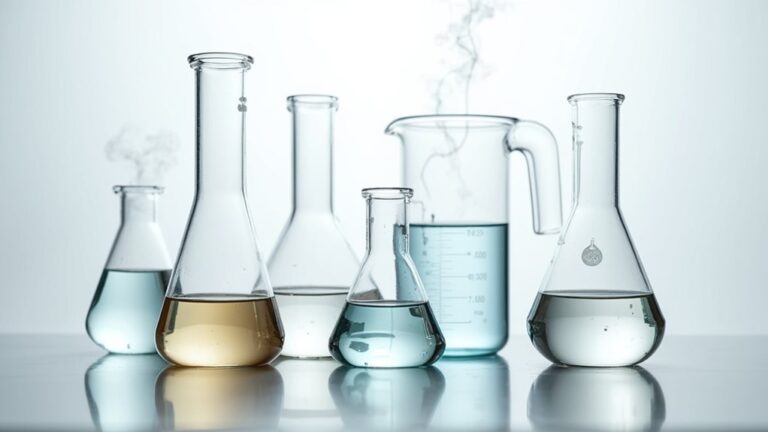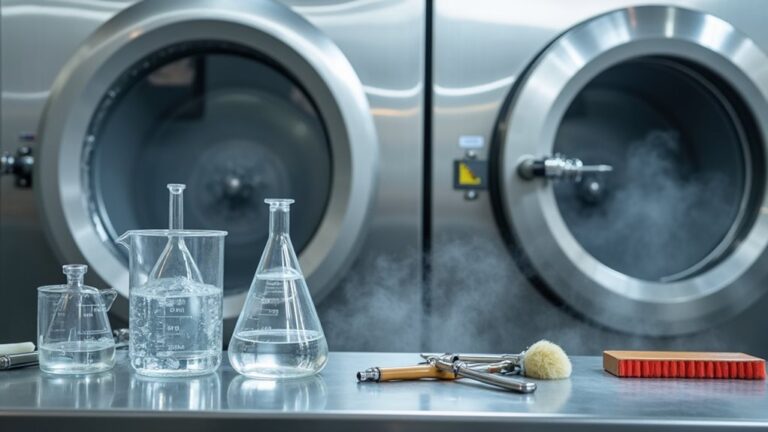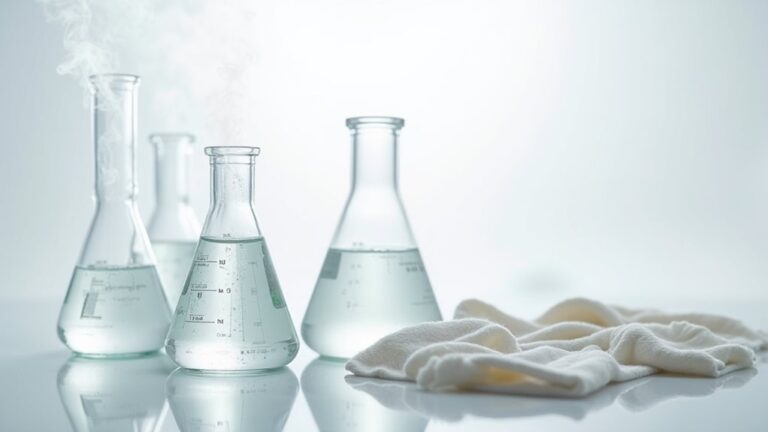Yes, dry cleaning chemicals are harmful to your health, particularly perchloroethylene (PCE), a known carcinogen used by most cleaners that clings to your clothes and releases toxic vapors in your home. You’re fundamentally breathing in chemicals linked to bladder cancer, respiratory problems, and nervous system damage every time you wear freshly cleaned garments. I learned this the hard way after experiencing headaches from my “fresh” suits, and now I always air out dry-cleaned items for days before wearing them. Exploring safer alternatives can protect both your health and environment.
Understanding the Chemistry Behind Dry Cleaning Solvents
When you drop off your favorite blazer at the dry cleaner, you’re probably not thinking about the invisible chemical dance happening behind those curtains, but trust me, understanding what’s going on back there can save you from some serious health headaches down the road.
Most dry cleaning solvents rely on perchloroethylene, a chemical that’s officially classified as a human carcinogen by health experts who know their stuff. This sneaky compound doesn’t just vanish after cleaning—residual PCE clings to your clothes, creating potential health risks through respiratory problems and indoor air contamination when you wear them.
To minimize exposure risks, consumers should allow freshly dry cleaned items to air out before wearing them, especially garments that will be worn close to the skin.
Thankfully, smarter alternative solvents like wet cleaning are emerging, offering hope for safer garment care without the scary health effects.
Health Risks of Perchloroethylene and Trichloroethylene Exposure
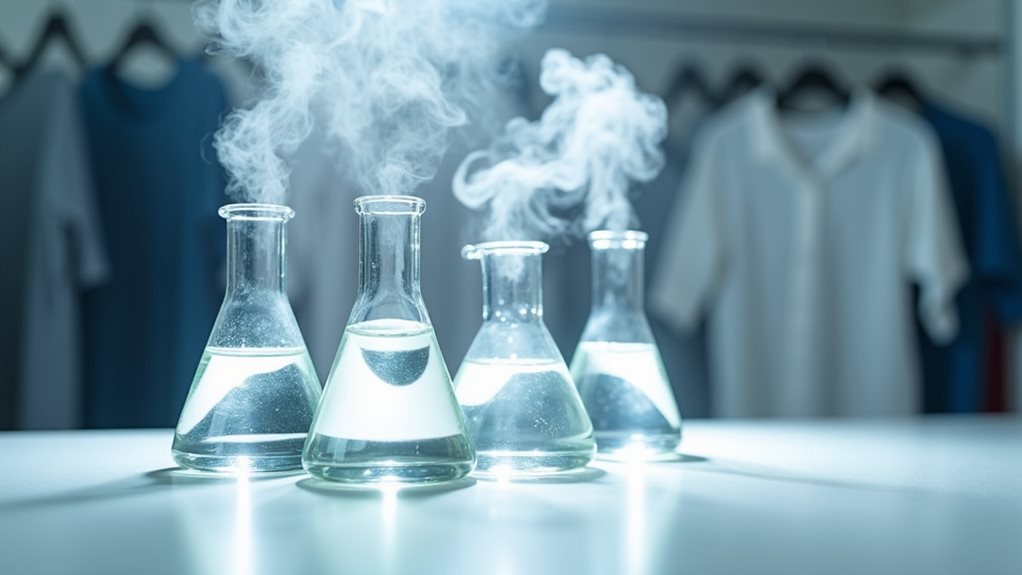
Although the invisible nature of chemical exposure makes it easy to dismiss, the health risks lurking in perchloroethylene and trichloroethylene are frighteningly real and surprisingly widespread.
The hidden danger of chemical exposure creates very real health threats that spread far wider than most people realize.
When you’re exposed to these toxic chemicals, you’re fundamentally playing Russian roulette with your health – and I’m not being dramatic here. Perchloroethylene directly links to bladder cancer and non-Hodgkin lymphoma, while trichloroethylene targets your kidneys and can cause devastating birth defects.
Dry cleaning workers face the harshest reality, developing cancer at alarming rates due to constant exposure in poorly ventilated spaces.
What’s particularly unsettling is that residual PCE clings to your freshly cleaned clothes, releasing vapors into your home every time you wear them, creating ongoing health risks you can’t even see.
Fortunately, many facilities are now transitioning to safer alternatives like wet cleaning, liquid CO2, and hydrocarbon solvents to reduce these health hazards.
How Toxic Residues Remain on Your Clothing After Cleaning

The nightmare doesn’t end when you pick up your “cleaned” clothes from the dry cleaner – in fact, that’s when a more insidious problem begins.
Those seemingly fresh garments are harboring toxic residues that’ll stick around longer than you’d ever imagine. Studies reveal that perchloroethylene (PCE) and other dry cleaning chemicals don’t magically disappear after processing, instead creating persistent clothing contamination that poses serious health risks.
What’s truly shocking is that subsequent cleaning cycles can actually increase chemical concentrations on your fabrics, turning your wool sweaters and cotton shirts into potential sources of inhalation exposure.
These residual chemicals vaporize in your closet, bedroom, and throughout your home, potentially triggering respiratory problems and headaches while creating an ongoing environmental impact that affects your family’s wellbeing daily. Beyond respiratory issues, prolonged exposure to these chemical residues can lead to more serious health complications including nervous system damage and liver problems.
Environmental Impact of Traditional Dry Cleaning Chemicals
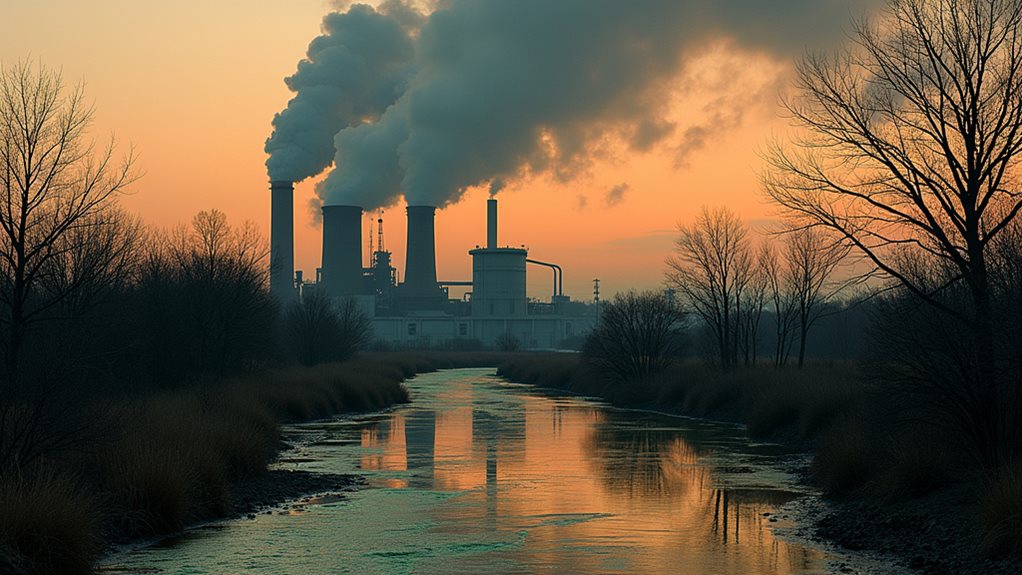
While you’re dealing with toxic residues clinging to your favorite dress shirt, there’s an even bigger picture unfolding outside your local dry cleaner’s doors that’ll make your head spin.
Perchloroethylene (PCE) doesn’t just vanish after cleaning your clothes – it escapes through ventilation systems, polluting outdoor air for weeks and creating serious air quality issues that affect entire neighborhoods.
The environmental impact gets worse when solvent leakage contaminates soil and groundwater, threatening drinking water safety and harming aquatic ecosystems we depend on.
What really keeps me up at night is PCE’s environmental persistence – this stuff sticks around, slowly breaking down into even more toxic chemicals that damage plant life and accelerate ozone depletion.
Beyond chemical contamination, traditional dry cleaning operations generate massive amounts of single-use plastic garment bags and wire hangers that inevitably end up clogging our already overwhelmed landfills.
Thankfully, alternatives to perc exist, reducing these devastating health risks.
Safer Alternative Cleaning Methods and Technologies
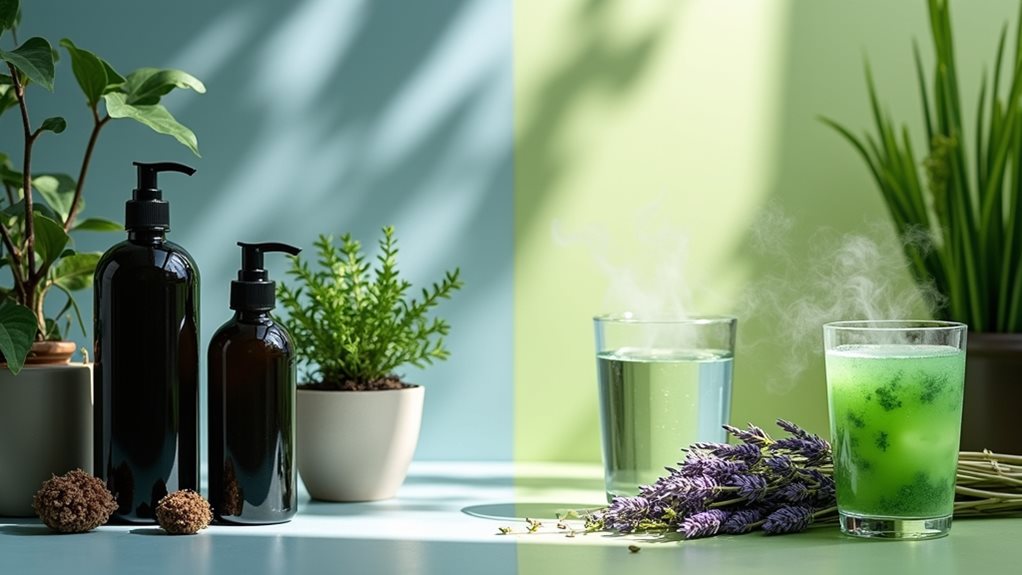
Fortunately, innovative dry cleaning technologies are emerging that’ll make you feel good about dropping off your clothes without worrying about toxic chemicals lurking in the fabric fibers afterward.
You’ve got safer alternatives like wet cleaning, which uses specialized detergents and moisture control to clean delicate fabrics without harsh solvents.
Liquid carbon dioxide systems work like magic, dissolving dirt while being completely non-toxic and biodegradable.
Some cleaners are embracing eco-friendly cleaning solutions like liquid silicone, which won’t irritate your skin or harm the environment.
Another promising option is hydrocarbon-based solutions, which offer a less toxic alternative to traditional perc solvents while still providing effective cleaning results.
The Environmental Protection Agency is actively pushing out harmful chemicals, encouraging professional cleaning methods that prioritize environmental responsibility.
When choosing a cleaner, ask about their processes – your health deserves better than yesterday’s toxic legacy!
Choosing Eco-Friendly Dry Cleaners for Your Health and Safety
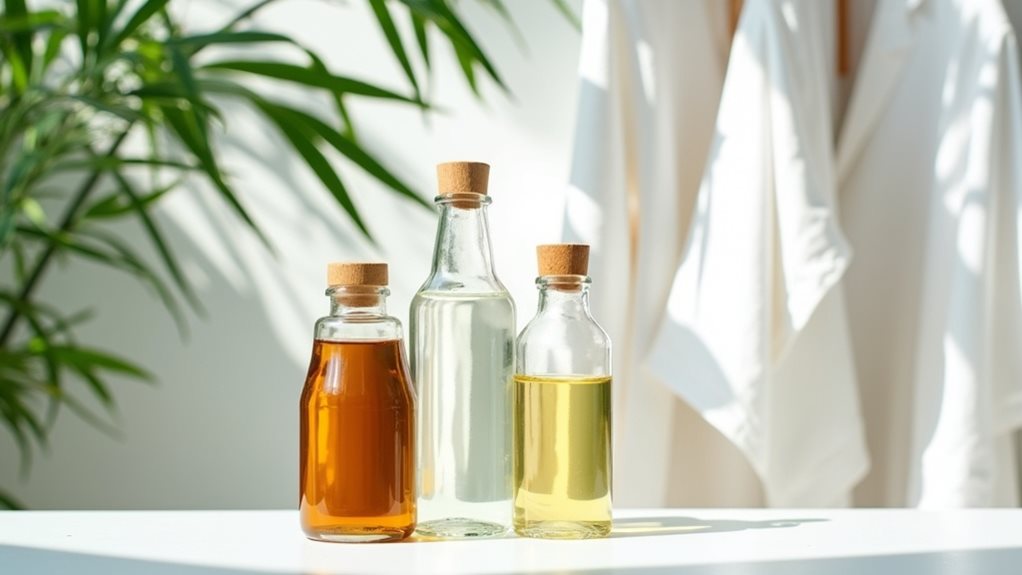
When you’re standing in front of two dry cleaning services on the same street, choosing the one that won’t bombard your favorite sweater with carcinogenic chemicals becomes a surprisingly empowering decision that’ll protect both your family’s health and the planet.
Smart consumers now ask pointed questions about solvents – you’ll want to avoid perchloroethylene and seek organic dry cleaners using biodegradable solvents like liquid carbon dioxide or wet cleaning methods.
These environmental champions don’t leave toxic residues lurking in your closet, dramatically reducing indoor chemical exposure that can make your home feel like a chemistry lab 🧪.
The best eco-friendly establishments often provide convenient delivery options, proving that prioritizing safety doesn’t mean sacrificing service quality or convenience.
Alternative solvents like hydrocarbon solvents and liquid silicone have proven equally effective at removing oils and grease while meeting stricter environmental regulations.

